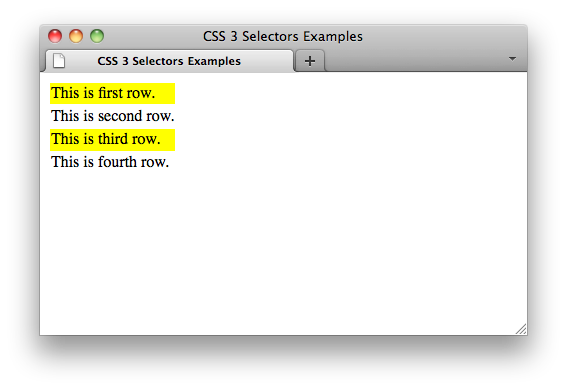CSS/Selectors/pseudo-classes/:nth-last-child
Pseudo-class :nth-last-child()
The :nth-last-child() pseudo-class represents an element that has an+b siblings after it in the document tree, for any positive integer or zero value of n, and has a parent element.
Syntax
selector:nth-last-child(an+b){ properties }
Point, Note
- The examples of an+b are as follows:
- :nth-last-child(odd) /* represents all odd foo elements in their parent element, counting from the last one */
- :nth-last-child(-n+2) /* represents the two last elements */
Example
[style.css]
tr:nth-last-child(2n){
background-color: yellow;
}
[index.html]
<body>
<table>
<tr><td>This is first row.</td></tr>
<tr><td>This is second row.</td></tr>
<tr><td>This is third row.</td></tr>
<tr><td>This is fourth row.</td></tr>
</table>
</body>
CSS defines the :nth-last-child() pseudo-class selector in 6.6.5.3. :nth-last-child() pseudo-class.
